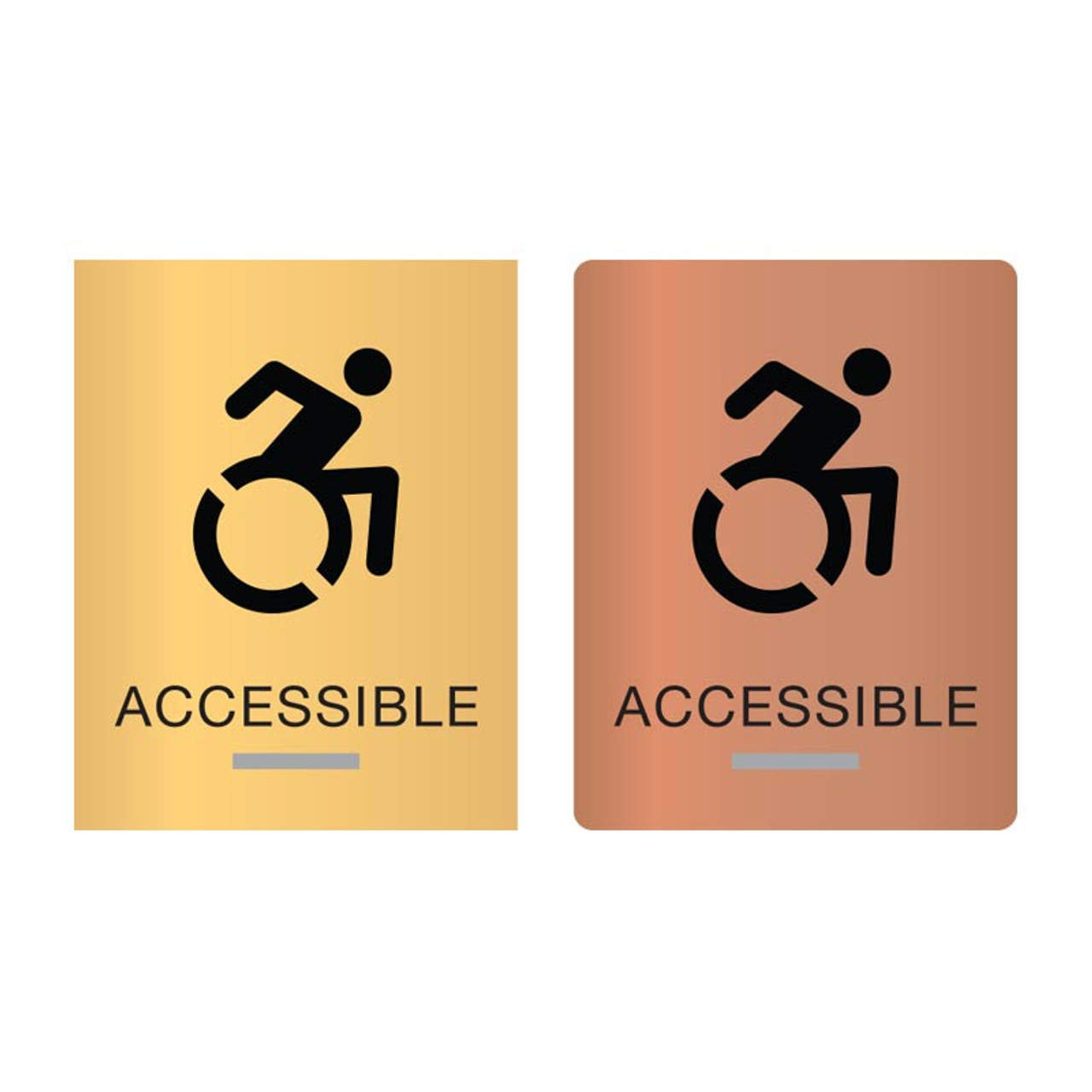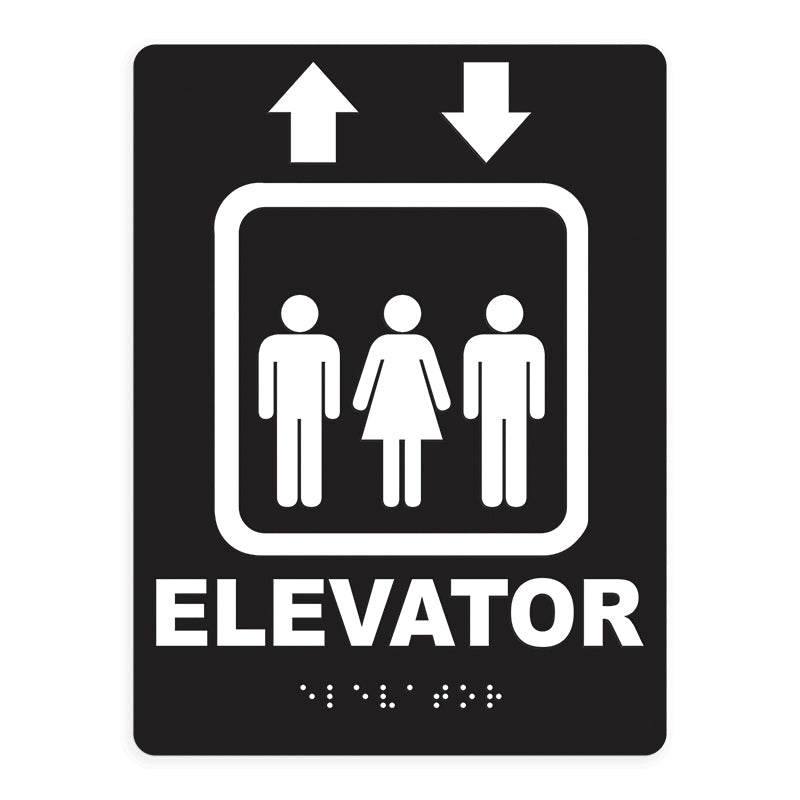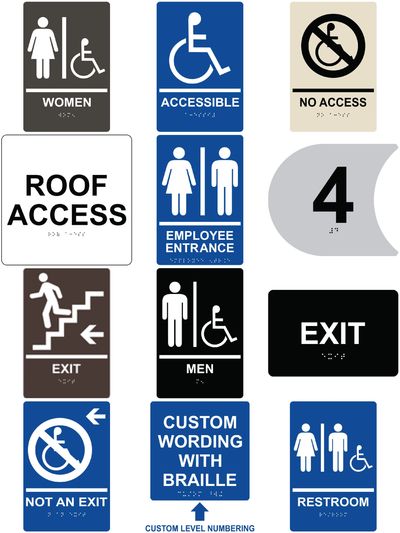Checking Out the Trick Attributes of ADA Signs for Improved Accessibility
In the realm of access, ADA indications offer as silent yet effective allies, guaranteeing that rooms are navigable and comprehensive for people with impairments. By incorporating Braille and tactile components, these signs damage barriers for the visually damaged, while high-contrast shade plans and legible typefaces cater to varied visual requirements.
Importance of ADA Conformity
Guaranteeing compliance with the Americans with Disabilities Act (ADA) is critical for promoting inclusivity and equivalent accessibility in public spaces and work environments. The ADA, established in 1990, mandates that all public facilities, employers, and transport solutions accommodate individuals with handicaps, guaranteeing they appreciate the exact same rights and possibilities as others. Compliance with ADA standards not just meets legal obligations however likewise improves a company's reputation by demonstrating its commitment to diversity and inclusivity.
One of the essential elements of ADA compliance is the application of easily accessible signs. ADA indicators are made to ensure that people with disabilities can easily navigate through buildings and rooms. These indicators must abide by details standards pertaining to dimension, typeface, shade comparison, and positioning to ensure exposure and readability for all. Appropriately applied ADA signs aids get rid of obstacles that individuals with disabilities usually experience, consequently advertising their freedom and self-confidence (ADA Signs).
In addition, sticking to ADA policies can minimize the danger of prospective penalties and lawful consequences. Organizations that fail to adhere to ADA guidelines may encounter charges or suits, which can be both monetarily difficult and damaging to their public image. Hence, ADA compliance is indispensable to promoting a fair environment for every person.
Braille and Tactile Elements
The unification of Braille and tactile components into ADA signs symbolizes the principles of access and inclusivity. These features are crucial for individuals that are aesthetically damaged or blind, enabling them to browse public rooms with greater self-reliance and self-confidence. Braille, a tactile writing system, is necessary in providing composed details in a format that can be quickly regarded through touch. It is usually placed underneath the equivalent text on signage to ensure that individuals can access the info without aesthetic assistance.
Tactile elements extend beyond Braille and consist of elevated characters and signs. These components are developed to be discernible by touch, permitting people to recognize space numbers, washrooms, departures, and other crucial areas. The ADA establishes details standards relating to the size, spacing, and placement of these responsive aspects to enhance readability and ensure uniformity throughout different environments.

High-Contrast Shade Plans
High-contrast shade plans play a critical duty in improving the presence and readability of ADA signage for people with visual impairments. These plans are important as they take full advantage of the difference in light reflectance in between text and history, ensuring that indicators are easily noticeable, even from a range. The Americans with Disabilities Act (ADA) mandates making use of particular color contrasts to fit those with limited vision, making it a crucial element of compliance.
The effectiveness of high-contrast shades hinges on their capacity to stand apart in numerous lighting problems, consisting of dimly lit atmospheres and locations with glare. Typically, dark text on a light history or light text on a dark background is used to achieve ideal comparison. For example, black text on a yellow or white background offers a raw visual difference that assists in fast recognition and understanding.

Legible Fonts and Text Dimension
When taking into consideration the design of ADA signage, the option of readable typefaces and appropriate text dimension can not be overemphasized. These components are important for making certain that indicators are accessible to individuals with visual problems. The Americans with Disabilities Act (ADA) mandates that typefaces must be sans-serif and not italic, oblique, script, highly ornamental, or of unusual form. These requirements help guarantee that the text is easily readable from a distance and that the characters are distinguishable to varied target markets.
The dimension of the message likewise plays a crucial duty in access. According to ADA standards, the minimal text elevation must be 5/8 inch, and it must boost proportionally with checking out range. This is especially essential in public rooms where signage demands to be reviewed swiftly and properly. Consistency in text dimension adds to a cohesive aesthetic experience, assisting individuals in browsing atmospheres efficiently.
Moreover, spacing between lines and letters is important to legibility. Ample spacing stops characters from appearing crowded, enhancing readability. By sticking to these criteria, designers can substantially improve ease of access, ensuring that signage serves its intended function for all people, regardless of their visual more info here capacities.
Efficient Positioning Strategies
Strategic positioning of ADA signs is vital for taking full advantage of availability and ensuring compliance with lawful criteria. Correctly located indicators guide individuals with specials needs properly, helping with navigating in public rooms. Trick considerations include presence, closeness, and height. ADA guidelines state that indications must be placed at a height between 48 to 60 inches from the ground to ensure they are within the line of view for both standing and seated individuals. This common elevation range is crucial for inclusivity, allowing wheelchair individuals and individuals of differing elevations to gain access to info effortlessly.
In addition, indications need to be placed adjacent to the lock side of doors to enable simple identification prior to entry. This positioning assists individuals situate spaces and areas without blockage. In cases where there is no door, signs ought to be situated on the local adjacent wall. Uniformity in sign positioning throughout a center improves predictability, minimizing confusion and boosting general user experience.

Verdict
ADA indications play an essential role in advertising accessibility by integrating attributes that deal with the requirements of people with navigate here disabilities. Integrating Braille and responsive components makes sure crucial details is available to the visually impaired, while high-contrast color pattern and legible sans-serif font styles improve presence throughout various lighting problems. Reliable positioning strategies, such as suitable installing elevations and critical areas, further help with navigation. These aspects collectively promote a comprehensive atmosphere, emphasizing the relevance of ADA conformity in ensuring equal access for all.
In the world of access, ADA signs offer as quiet yet effective allies, making certain that rooms are accessible and comprehensive for people with specials needs. The ADA, passed in 1990, mandates that all public centers, companies, and transport solutions fit people with specials needs, ensuring they delight in the exact same legal rights and opportunities as others. browse around this site ADA Signs. ADA signs are developed to guarantee that individuals with disabilities can conveniently browse with buildings and rooms. ADA guidelines specify that indicators need to be installed at a height in between 48 to 60 inches from the ground to ensure they are within the line of view for both standing and seated individuals.ADA indicators play a crucial role in advertising ease of access by incorporating functions that resolve the requirements of people with specials needs